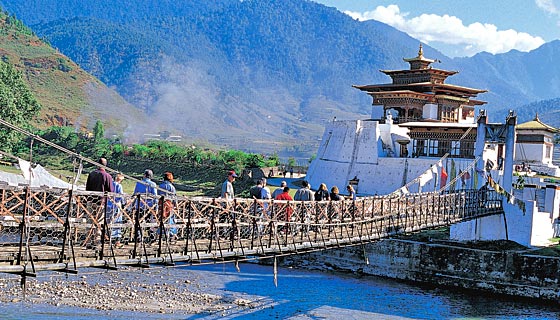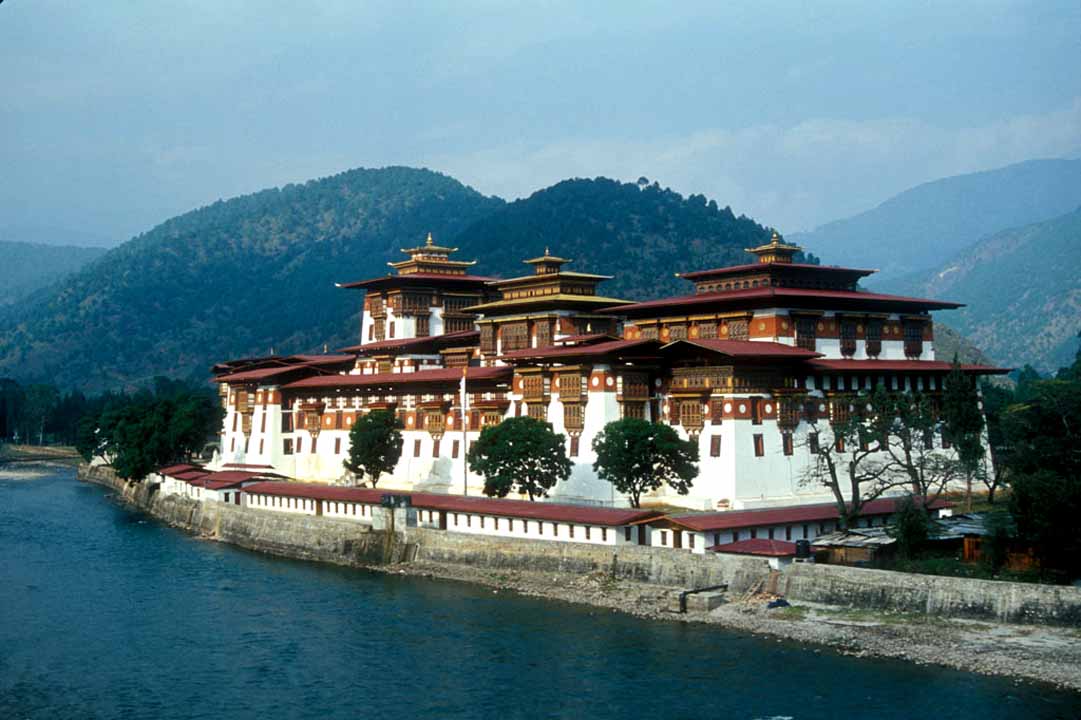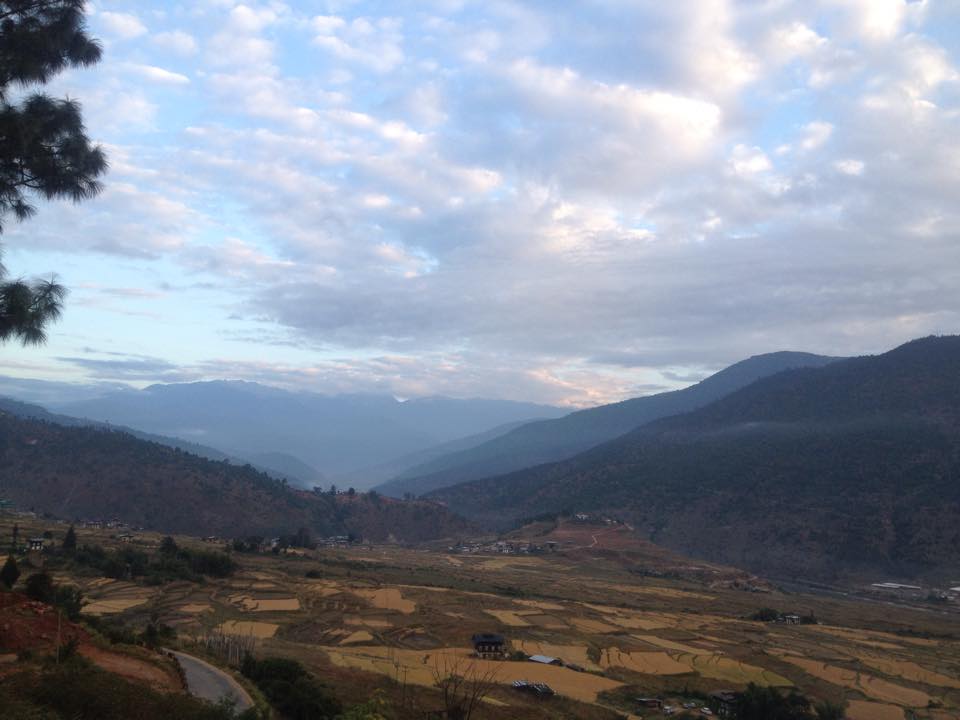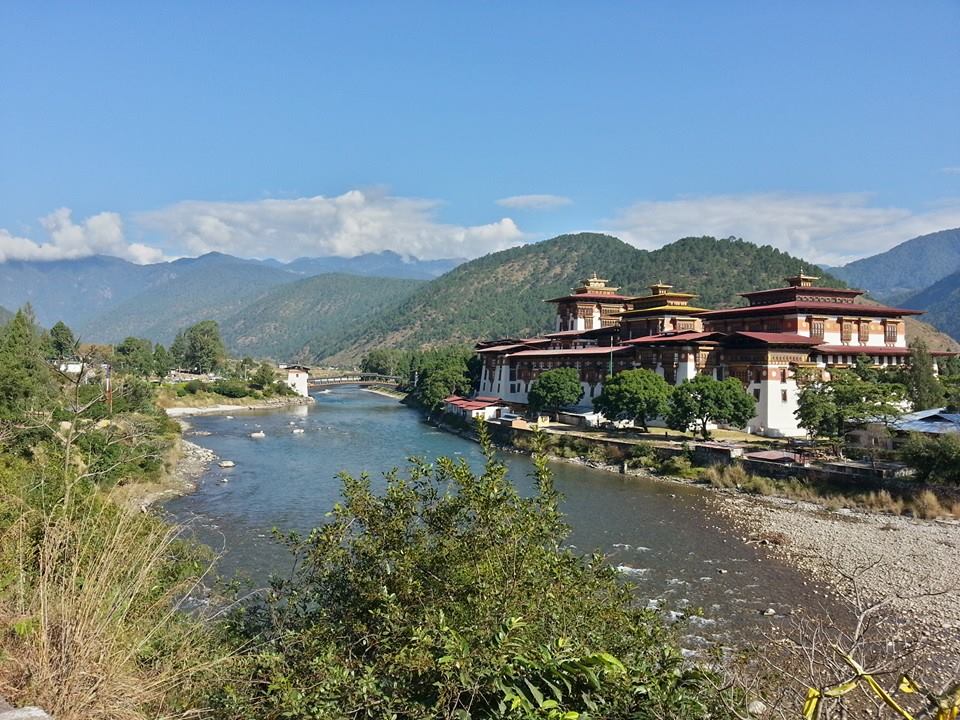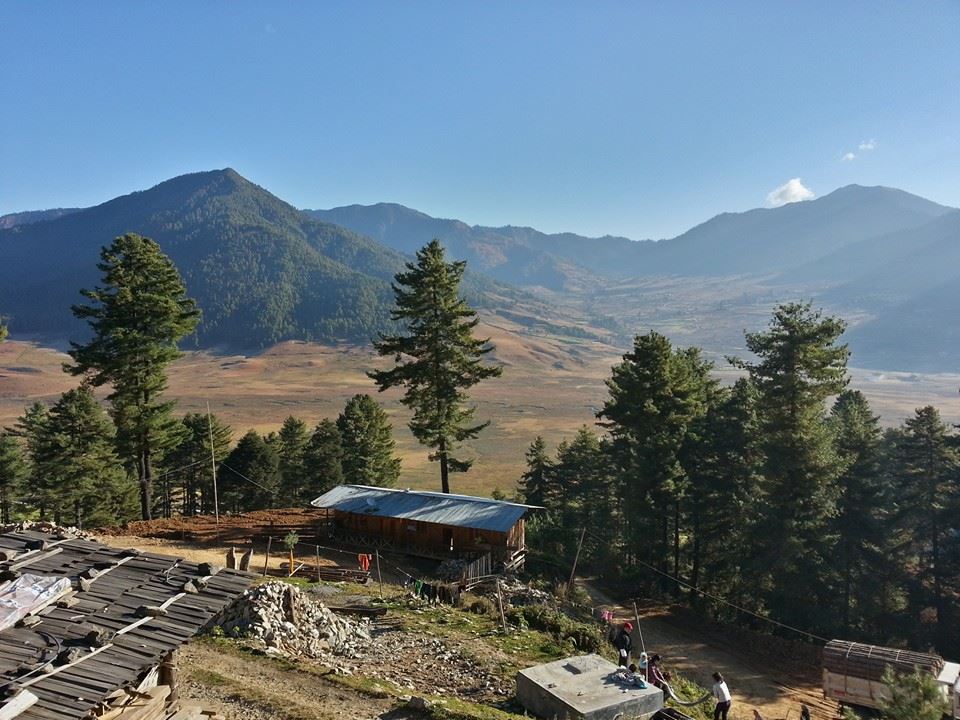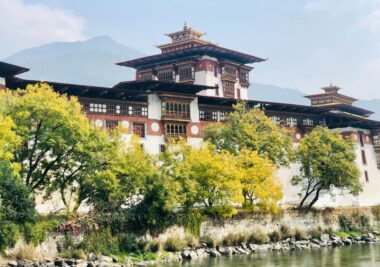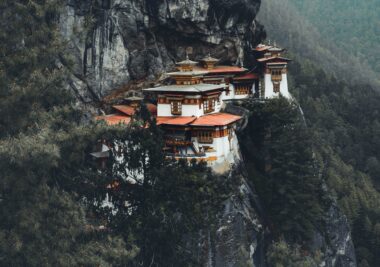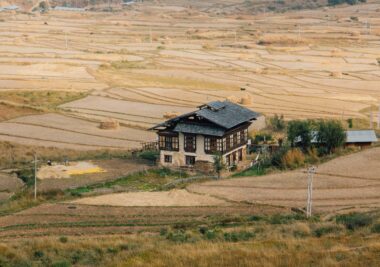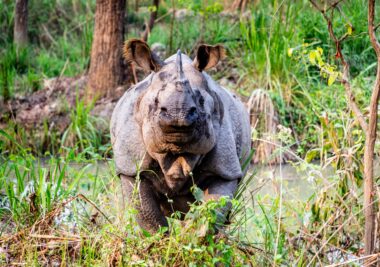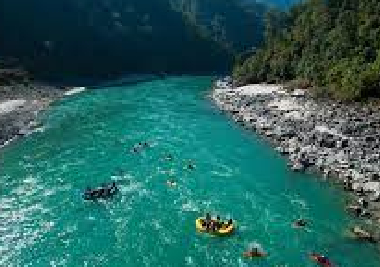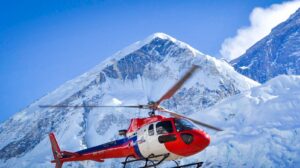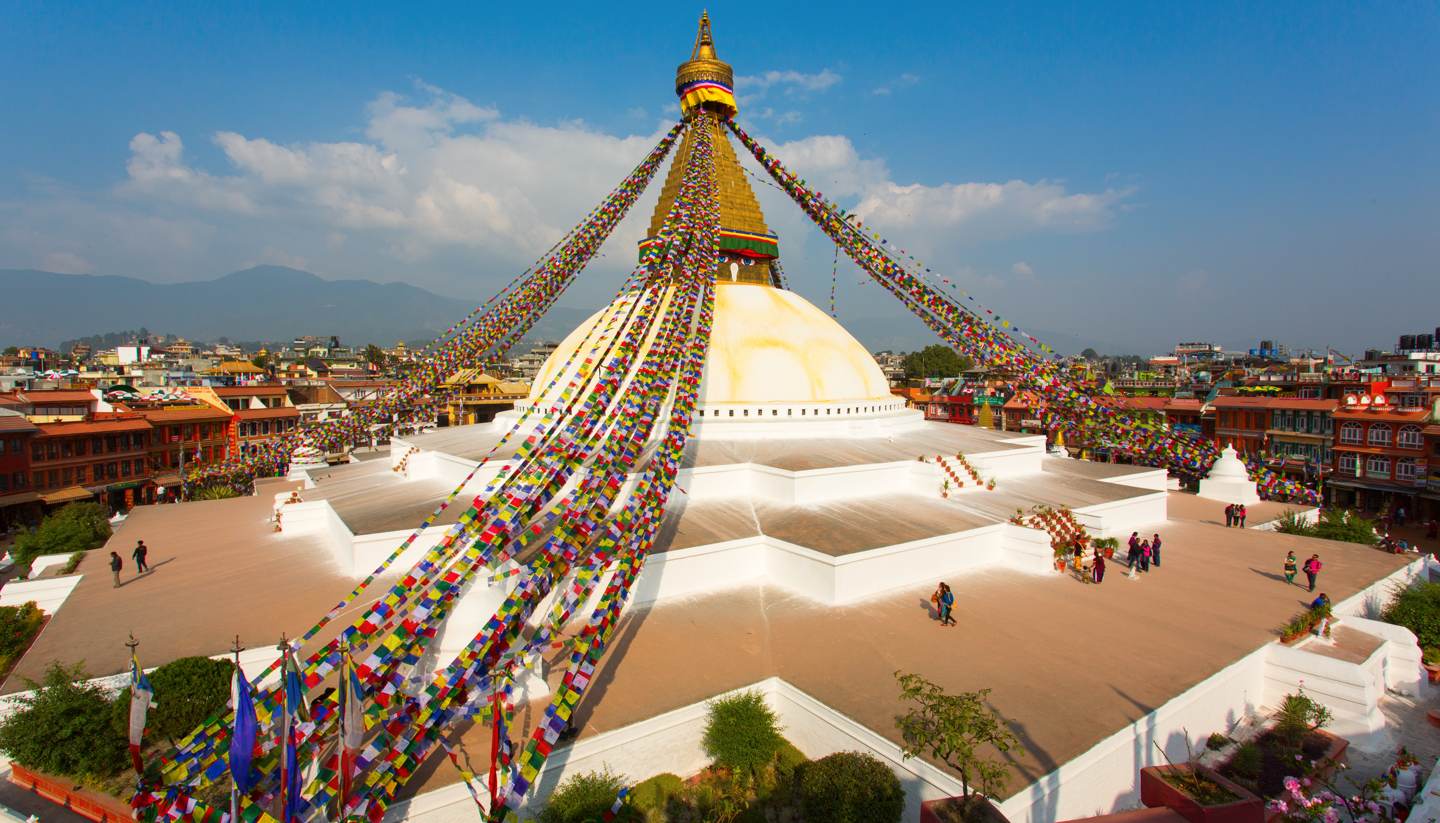Shangrila Tour -10 Days
- Based on 0 review(s)
The Himalayan kingdom of Bhutan, additionally famous as the kingdom of Thunder Dragon is a spiritual sanctuary. Bhutan is rich in its culture due to the considerations and activities of its precursors.
Trip Overview
The Himalayan kingdom of Bhutan, additionally famous as the kingdom of Thunder Dragon is a spiritual sanctuary. Bhutan is rich in its culture due to the considerations and activities of its precursors. Additionally, known as Druk Yul, the nation stands especially unmistakable for being the main country to keep up Mahayana Buddhism in its Tantric Vajrayana structure as the official religion. Now, this spectacular Bhutan Shangrila Cultural Tour lets you unravel the hidden beauty of Bhutan. Religion is the point of convergence for expressions of the festivals, arts, monasteries, stupas, temples, priests, and tulkus all throughout the entire country.
Bhutan Shangrila Cultural Tour
In fact, the sound and consistent development of the nation is accomplishable due to four pivotal occasions. The appearance of Buddhism was followed by Guru Rinpoche. The unification of the country by Shabdrung Ngawang Namgyal. the foundation of the Monarchy under first King Ugyen Wangchuck. And the aggregate incorporation inside local and worldwide frameworks prompted modernization.
Likewise, the Bhutan Shangrila Cultural Tour lets you explore Bhutanese architecture. Furthermore, Bhutanese architecture comprises Chortens, stonewalls, monasteries, temples, fortresses, manors, and houses. Pretty much every structure is planned with obvious building ideas established in Tibetan Buddhism. Similarly, Bhutanese art has a significant Tibetan impact. The excellent wall paintings, fine sculpted images, historical writings, and thangkas all have a religious topic. The level of anonymity, consistency, and importance of these expressions and models is very remarkable. Besides, with in excess of 10000 stupas or Chortens and 2000 monasteries in the realm, Bhutan is one of the top destinations for spiritual seekers. In addition, exploration of the natural ponders amidst the Himalayas without a doubt gives a remarkable lifetime experience in Bhutan. The only nation on the planet which measures productivity as far as Gross National Happiness.
Our Bhutan Shangrila Cultural Tour begins after a trip to the lovely Paro valley from Kathmandu. Bhutan is perhaps the best destination to investigate cultural grandeurs and natural wonders in south Asia. This cultural tour covers significant cultural zones including Paro, Thimpu, Trongsa, Bumthang, and Punakha. Likewise a visit to temples, monasteries, Chortens, and astounding scenes. From the popular Tiger’s Nest Monastery to the tired roads of Paro, visiting Bhutan is about the simple delights of natural excellence and a particularly preserved culture. Experience this long-isolated nation’s dazzling mountains, unique architecture in this 10-day Bhutan Shangrila Cultural Tour.
DETAILED ITINERARY
Arriving in the Paro Valley is an ideal entry into the other universe of Bhutan, with its unadulterated air and sentiment of peacefulness. Fields of green and earthy colored spread a large portion of the valley floor, while villas and detached homesteads spot the scene. Get settled and eat before visiting the Paro Dzong. Constructed in the mid-fifteenth century as a modest stronghold, it was formed into a significantly more ordered fortification in 1646. One of the realm’s best instances of traditional Bhutanese design, the structure currently houses a monastic school.
On the return tour, you’ll cross Nyamai-Zam, a traditional wooden secured bridge that traverses the Paro River. Roosted above Paro Dzong is its lookout redesigned in 1968 to house the National Museum. The irregular round building is underlying the state of a conch shell, and its presentations incorporate an amazing assortment of antiquated and current thangkas just as fearsome celebration veils. Afterward, visit the Kyichu Monastery, through the Drugyel Dzong ruins. It is probably the oldest temple in the nation, implied in the seventh century by the Tibetan King Songsten Gampo. Go through your first evening of the excursion in Paro. Later drive towards the hotel. Overnight at the Hotel in Paro.
After breakfast, drive around 25 minutes to climb to one of Bhutan’s most respected and revered pilgrimage sites, the Taktshang Lhakhang, prevalently known as the Tiger’s Nest Monastery. The journey offers fabulous perspectives on this sacred monastery roosted unstably on a sheer stone face almost 3,000 feet (900 m) over the valley floor. Legend has it that Guru Rinpoche, father of Mahayana Buddhism, showed up in the Paro Valley over a thousand years prior on the back of a tigress. He meditated for three months here in a cavern, which was changed over into this iconic monastery.
Start the climb from the base to the cafeteria, which will take around 90 minutes along a well-maintained path, and stop here for a rest. From here it’s about an hour’s trip across a shocking scene to arrive at the monastery, which sticks to a vertical rocky cliff. On your return, stop again at the cafeteria for lunch, and then drop at the base of Ramthanka. The return climb takes around two hours. At night, loosen up with a conventional hot stone shower before your second night in Paro. Overnight at the hotel in Paro.
Start ahead of schedule for the drive to Chele La, the most elevated street pass in Bhutan. It winds upwards through blue pine and rhododendron woodlands for 22 miles (35 km). On a crisp morning, the view clears down to the Haa Valley, which just opened to foreigners in 2002 because of its closeness to the border with Sikkim (India) and Tibet.
Passing along the edelweiss-secured edge, you will pass a sky burial site, the traditional Tibetan way of disposing of their dead. Now then drop for around two hours through thick rhododendron forest to Kila Goemba, an antiquated convent settled in a rocky patch on the mountainside beneath. Kila Goemba is a quiet retreat for 32 anim (Buddhist nuns) who lead an undisturbed existence of religious studies, petition, and meditation. This sacred spot has an ageless quality, which is an abundant award for the effort of the climb. Having made your offerings and maybe even been blessed, the time has come to plummet back to the street.
For the individuals who might incline toward a relaxed touring day, there is the alternative to drive from Chele La down the opposite side to the Haa Valley. In the event that Chele La isn’t open throughout the winter, your guide will propose an option during the current day’s trip.
Haa is the ancestral home of the Queen Grandmother and the famous Dorji family. Here, there are some significant temples and a couple of shops encompassed by farmhouses and apple plantations close to the quick streaming Haa River. The slopes of Haa give an ideal area for climbing or mountain biking, with the opportunity to stop and visit far-off holy places and temples and find the unaltered ways of life of traveling herders. Paro to Chapcha
After a delicious breakfast, head toward the grand valley of Chapcha, about 90 minutes away. Roosted on a peak stands the Dokhachu Goenpa, a far-off monastery that offers uncommon bits of knowledge about the lifestyle of the 20-30 priests who dwell there. Go through the day unwinding at the monastery and watching the way of life of the priests and overnight at the Monastery Guest House.
After breakfast, head to Thimphu, located in a huge valley navigated by the Wangchu River and encompassed by high pinnacles. Visit the Changangkha Lhakhang, a fortification-like sanctuary roosted on an edge south of Motithang. From the yard, you’ll discover extraordinary perspectives on the Thimphu Valley. Next, drive towards Dechenphodrang. Since 1971, it has housed the state religious school – on any standard day the grounds murmur with recitations exuding from the windows. The twelfth-century artistic creations have been reestablished, and the upper floor includes a huge figure of Zhabdrung Ngawang Namgyal.
After lunch, visit the Folk Heritage Museum, which will give you a brief look into the traditional Bhutanese way of life. There is an amazing assortment of typical household objects, apparatuses, and equipment. The exhibition hall additionally composes ordinary showings of rustic conventions, skills, and customs, and hosts educational programs for kids. Next, visit the Vast Art Gallery, the capital’s primary place for local artists. It’s an incredible spot to plug into the Thimphu workmanship scene, look at the most recent displays, and chat with artists.
Afterward, drive towards the Tashichho Dzong. It was at first established in 1641, yet reconstructed in its current structure in 1965. The dzong houses the fundamental secretariat building with the Throne Room of His Majesty the King of Bhutan. The National Assembly Hall is housed in an advanced structure on the opposite side of the stream. Overnight at Thimphu.
Leaving Thimphu, head into the field towards the Gangtey Valley, home of the uncommon blacked necked cranes. The drive rises steadily to the Dochula Pass, with sublime perspectives on the Himalayas, where you’ll make an appearance at the Dochula Monastery.
The plunge to Wangduephodrang is dynamic and brilliant, with vacillating prayer flags flying in the midst of terraced farmland and streams. Wangduephodrang is the last town on the roadway before entering central Bhutan. Here, you can decide to stop at a perspective and see the remains of the Wangdue Dzong, which was lost to fire however which is being remade. Now, advance towards the Phobjikha Valley, a wide chilly valley with a central stream that wanders through shrubberies of bantam bamboo. The woods past the homesteads are for the most part coniferous, and the overall vegetation is made to a great extent out of blue pine, birch, maple, and a few types of rhododendrons. Cranes move here in the winter.
Later in the afternoon, appreciate some conventional games. Bhutan’s public game is DHA (archery) which, alongside khuru (darts), is the most well known game in the nation. Go through your night at relaxation in the hotel, or go for a walk with your guide to explore the entrancing glacier valley. Overnight at the hotel Gangtey.
Today you’ll be touring the Phobjikha Valley. Roosted on a little slope ascending from the valley floor, the Gangtey Monastery is encircled by a huge town, fundamentally occupied by locals who take care of the monastery. Gangtey Monastery was established in 1613, and the religious tradition of Pema Lingpa is still educated there. The monastery was revamped as a Dzong in the late seventeenth/mid-eighteenth century.
Around the Phobjikha Valley, you can likewise appreciate the Gangtey Nature Trail. This pleasurable walk begins from the little peak sitting above Gangtey Goemba. Head downhill through blooming glades to Simchubara Village, and from here through lovely woodland and out of the dark valley. Subsequent to passing Khewa Lhakhang, the path closes at the Tabiding football ground. The nature trail can be joined with a visit to Gangtey Goemba. At night head to Punakha Valley, the winter capital of Bhutan. Overnight at Hotel in Punakha.
Today, take a tour around probably the most beautiful Dzong of Bhutan, the Punakha Dzong. Also, explore the Punakha countryside by strolling through paddy fields to Pana town to see the Chimi Lhakhang Temple. Chimi Lhakhang is situated on a slope in the midst of rice fields. The temple is devoted to Drukpa Kunely and furthermore prevalently known as the fertility temple. This temple was inherited in the year 1400 and is a mainstream journey point for Bhutanese individuals. Head back to Punakha for the evening. Overnight at the Hotel in Punakha.
After an early breakfast, set out on a lovely day climb to Khamsum Yulley Namgyal Monastery. A thirty-minute drive from Punakha Dzong will carry you to the base of the slope on which this temple is fabricated. From the bus park, cross a suspension bridge and stroll through rice fields before climbing a moderate grade encompassed by pine trees. The climb up is about 60 minutes, and down for about thirty minutes. Appreciate the quiet common excellence of the zone and light traditional butter lamps at the temple – an incredible offering representing wisdom.
After the climb, drive back towards the Paro Valley, around a four-hour drive. Stop at the Dochula Pass for photos and to hang prayer flags. Overnight at the hotel in Paro.
Finally, your memorable Bhutan Shangrila Cultural Tour ends today. So after breakfast one of our representatives escorts you to the international terminal. From there you will bid farewell to the Kingdom of Thunder Dragon and head towards your next destination.
Note above itinerary:
What to expect?
Price Includes
- Private transportation
- Necessary Bhutan travel permits
- English speaking Bhutanese guide and Driver
- Accommodation on Twin sharing/ Single room basis.
- Sightseeing and monastery entrance fees as per the itinerary
- Meal plan: Full Board Basis
- Bhutan Government Royalty fee ($ 65 per person / per day)
- Bhutan Visa fee
- Flight fare for Kathmandu- Paro- Kathmandu or from other destination.
Price Excludes
- Insurance of any kind.
- Additional cost due to natural calamity and unforeseen circumstance
- Personal expenses such as drink, guide tips & etc.
Trip Info
Short Description Mode Of The Packages: What Are Included In The Packages
Hotel accommodation in Kathmandu with breakfast at 2 to 3 stars level, Twin sharing comfortable and clean private room in trekking, both ways domestic flight tickets from KTM/Lukla/KTM, necessary permits, all the ground transportation by tourist vehicles, an experienced guide and porter and all the necessary permits.
TREKKING EQUIPMENTS, GEARS & SOME MEDICINES
- Sun hat
- Scarf
- Light balaclava
- Warm wool hat
- UV protection one Sunglasses
- Head torch with extra batteries.
- Tshirts
- Shirts
- Sleeveless or body warmer type fleece.
- Long sleeve shirts
- Thermal Vest
- Down Jacket
- Fleece Jacket
- Pullover
- Sports bras (women)
- Waterproof outer jacket
- Rain Coat
- Hand wear
- Fleece gloves.
- Warms mittens or gloves.
- Long Under Wear
- Short Under Wear
- Lightweight Cotton Long Pants
- Warm Trousers
- Tracksuit pants
- Lightweight thermal trouser
- Fleece pants
- Cotton paints
- Thin inner socks
- Thick warm wool hiking socks
- Walking boots with ankle support
- Trainers or trail shoes
- Gaiters
- Micro spikes
- Camera and Accessories
- Phone
- Power Bank
- Solar Panel
- Travel Adapter
- Book
- Playing Cards/Games
- Journal and Pen
- Snacks and Specialist Food
- Sunscreen
- Insect Repellent
- Hand Sanitizer
- Toilet Paper
- Wet Wipes
- Pocket Hand Warmers
- Moisturizing skin cream and Lip balm
- Toiletries
- Water purifier
- First Aid
- Passport and Copy
- Travel Insurance Details
- Trekking Permit(s)
- Waterproof Document Wallet
- Cash
- Guide will take a group first aid kit but please bring personal medications and other items you might use regularly such as
- Any personal medications
- Malaria prophylactic tablets
- Blister treatment
- Rehydration powder
- Analgesics (Paracetamol, ibuprofen and aspirin)
- Plasters and zinc oxide tape
- Throat lozenges
- Diamox
- Duffel Bag or Suitcase
- Day pack
- Sleeping bag
- Water bottle
- Trekking poles
- Towel
Good to Know
Q. Do you provide any gears for trekking?
Q. Can I rent or buy gears in Kathmandu?
Q. How much weight does porter carries?
Q. How much weight does airplane allow to Lukla?
Q. Can I take some more gears for paying extra charge?
Q. When Should I pack my gears?
Q. What equipment should I carry at Daypack?
Q. Can I store suitcase and other unnecessary gears in hotel in Kathmandu or at your office?
TRAVEL INSURANCE
Travel insurance is compulsory for all Clients undertaking any tour. It should provide adequate protection for the full duration of the tour to cover personal injury, medical expenses, repatriation expenses, helicopter evacuation, loss of luggage, etc. For your kind information, we would like to give a list of the insurance companies, please inquire with them.
- USA and Canada: Tugo, United Health Care, World Nomad, Blue Cross
- Australia and New Zealand: Fast Cover, Allianz Australia
- Singapore: Ergo, World Nomad (Explore plan level 3)
- Europe: Europe Assistance, Austrian Alpine Club, Allianz Europe
- India: ICICI Lombard
ALTITUDE AND TEMPERATURE IN NEPAL
Altitude (in meter) & Temperature (in degree Celsius) in Nepal over 2000m/6056ft. Trekking areas are only situated over 2000meter in Nepal.
| Altitude | Spring | Summer | Autumn | Winter | ||||
| March, April, May | June, July, Aug | Sept., Oct, Nov | Dec, Jan, Feb | |||||
| Max. | Min. | Max. | Min. | Max. | Min. | Max. | Min. | |
| 2000m -2500m | 27 | 5 | 29 | 9 | 25 | 2 | 20 | -2 |
| 3000m – 3500m | 12 | -5 | 20 | -1 | 17 | -2 | 14 | -7 |
| 4000m – 4500m | 10 | -7 | 14 | -3 | 12 | -7 | 7 | -10 |
| 4500m- 5500m | 9 | -10 | 12 | -5 | 10 | -15 | 5 | -20 |
Frequently Asked Questions
Common questions about company
Locally owned and managed, the company established in 1999, has earned its reputation by the dedication and hard work of the knowledgeable, friendly and well -trained staff. Safe, enjoyable travel are the hallmark of Unique Path, and the best way to achieve that is a combination of accurate preparation and realistic expectations. With this in mind, we work honestly and effectively to provide you the Himalayan experience that suits your interest.
We respect and follow our clients’ suggestions and ideas for planning their holiday. Our aim is to take you to a world totally different from your own and allow you to connect (or re-connect) with your own spirituality. Our hope is that all of our clients will leave Nepal with grand tales to share with their family and friends at home and will want to return again and again to their new friends in Nepal.
It is important to be aware that there are many companies running business with expired licenses; business that do not observe the legal formalities imposed by the country act. In the same manner, we have seen many examples of so – called trekking / touring agencies illegally operated by individuals & freelancers through their own personal websites.
Finally, if you book your trip with an unauthorized agency in Nepal or abroad, there is a greater risk that problems will occur during the course of your time in Himalaya. In order to protect yourself from these problems, take the following hints into consideration prior to confirming your journey with any trekking or travel agency. We’ve ensured that our certificates are up-to- date and in proper order.
All of our trips are led by qualified professional guides, who are well trained by our Government. We believe that our incredible guides and staff are the foundation of our programs. All of our guides are highly skilled professionals who have been selected based on their technical proficiency, proven safety records, careful judgment, patient and supportive teaching styles and great personalities.
Our job is to ensure your comfort and safety as we take you where you want to go, because your holiday is ours. Our guides are trained by the Nepal Mountaineering Association, the Ministry of Tourism and at the High Altitude Medical Training Center. Guides are very experienced in dealing with the effects of higher altitudes and since they are natives of Nepal, they easily acclimatize and therefore can better care for their clients. They are equipped with necessary medical supplies and can assist you with basic first aid treatment.
Nepal's location/ Entry information/Visa
Nepal is a landlocked country in Southern Asia, bordered by China to the north and India to the east, south, and west. It lies along the southern slopes of the Himalayan mountain ranges, making
it the largest sovereign Himalayan state. The capital city is Kathmandu, which is also the largest city in Nepal.
Nepal is a popular tourist destination in south Asia. Several airlines have direct and non-stop flights from Middle East and Asia to Tribhuvan International Airport (TIA), Kathmandu, and the only international airport in Nepal.
By flight: There is direct flights from London, Paris, Frankfurt, Doha, Osaka, Shanghi, Mascow, Bangkok, Singapore, Hongkong, Karachi, Bombay, Delhi, Calcutta, Paro, Dhaka, Lhasa, Varanasi.
By land: Train and road network in India can be used to travel from north India to Nepal. In the east Kakarbhitta, across Silguri and Darjeeling of West Bengal and in the center Bhairawa ( Lumbini ) provides easy access to enter Nepal. Bhairawa entry-exit point provides suitable train and bus connections to Varanasi, Bodgaya, Patna and Agra. In Far West Nepal the entry point is Mahendranagar. It can be reached by road from Delhi. There are good network of road and train in India.
All the foreign nationals except Indians need to obtain visas to enter Nepal.
Requirements for tourist visa include: Valid passport with a minimum of six-month validity period at the time of entry into Nepal.
You can obtain Tourist Visa from the Nepalese Diplomatic Mission in your country or from the Immigration Counter at Entry Points on arrival.
Here are the link to obtain visa of the Nepalese Diplomatic Mission in your country: Online Visa Application (immigration.gov.np)
Here are the link to obtain visa from the Immigration Counter at Entry Points on arrival. https://nepaliport.immigration.gov.np/online
After summit form, please print it and bring with along with you which you need to show at the immigration counter at the airport or Nepalese Diplomatic Mission in your country.
Nepal has modern banking facilities and some international banks even have offices in Kathmandu. Almost all foreign currencies along with credit cards such as Visa, and Master card are accepted in Nepal. Nepal has also ATM facilities as well.
Nepalese currency is spelled as Nepalese Rupees or Rupee (Rs) or Nepali Rupee, and in short it is written NRS or RS. Currently Notes of the following denominations are used: 1000, 500, 100, 50, 25, 10, 5, 2, and 1 rupees. It is recommended that you travel with 100,500 and 1000 notes.
Weather/ Physical fitness/ Experience/ Daily routine
The period between the First Week of February and the First Week of June is often regarded as the best season for trekking in the Nepali mountains. Temperatures during this period in the Nepali mountains remain relatively warm 10° to 15°, much warmer than the one you experience during the winter. The most important thing about this season is that mornings mostly remain bright and clear. The afternoons remain mostly filled with warm air. The rhododendron forests in springtime create a spectacular scenes. You can experience the wild and natural “Himalayan” beauty. Needless to say, June is much warmer and greener.
Another best season for trekking in the Nepal is from September to the half of December. This is often regarded as the ideal time for the panoramic view of mountains. Days during these months typically remain sunny and clear. Moderate temperatures and comparatively cool evenings make the experience of trekking in this part of the world quite unique.
Please be informed that July to August is the season of monsoon in Nepal. But the monsoon is mountains are different from the ones in the plains. Making trekking around Mustang, Rara, Dolpo, Annapurna circuit, Lantang Valley, Jomsom Trek, Everest base camp, and Gokyo valley during this season enables you to explore nature in their unique blend.
As long as you are in good physical shape, you do not require any hiking experience for this trek. Good fitness level, proper training plan, and acclimation make the trek much easier.
Proper training like 3-5 days of week (hiking, brisk walking, jogging, cycling, swimming) are essential for an enjoyable and successful trek in Nepal. Generally, you need to walk 6 to 7 hours each day while trekking in Everest.
Respecting local customs and traditions enhances your experience and fosters positive interactions with the community. Here are some aspects to keep in mind:
The traditional greeting in the Everest region is “Namaste.” Use it when meeting locals or fellow trekkers.
Dress Modestly: Dress modestly, especially when visiting monasteries or religious sites.
Photography: Always ask for permission before taking photos of people or their homes.
We wake-up call at 7 am an early morning. After a breakfast, we repack our duffel bag and leave it with your trekking staffs.
We are normally on the trail before 8 a.m. Trek at your own pace; all you need carry is a daypack and camera. Guides hike along to point out interesting flora, fauna and sights. Along the trail are spots to relax, purchase a snack or soda, use toilet facilities and shop for souvenirs.
We will have lunch about 11:30 am to 12:30 am.
A typical day’s hike usually ends in the early afternoon. Time to read or nap before dinner. After dinner there is time to play cards, stargaze and reflect on all the wondrous moments of your day.
Certainly! When trekking at high altitudes, it’s essential to acclimatize gradually to prevent altitude sickness. The provided itinerary includes acclimatization days to help you adjust to the altitude.
There are health centers and clinics available in some villages along the route in Everest. Your guide will also carry a basic first aid kit.
Accommodations & Foods
We do provide 3 stars hotel in Kathmandu and Pokhara on BB plan and tea house (mountain lodge) in trekking in AP plan (accommodation, breakfast, lunch and dinner). Tea Houses (mountain lodge) are more like hotels, with hot showers, western food, and private rooms (twin sharing). In this arrangement overnight halts with dinner and breakfast will be in Tea-houses (Lodges) and lunches in local restaurants en-route. Freshly cooked food is served at all times (western, continental and Nepalese, Chinese, Indian and Tibetan meals are available in all places).
Furthermore as you will be staying in locally owned lodges you will be benefiting and interacting with the local community. It will give you a true feel for the Nepalese people and their lives.
Hygiene when trekking generally has improved considerably over the last ten years. Our guides have the local knowledge to choose the lodges which maintain a high standard of hygiene.
While on trek you can expect to sample a variety of local foods including such items as Tibetan fried bread, soups, Momos (steamed dumplings), Daal bhat (lentils and rice), Tarkari (steamed, fried, or curried vegetables), potatoes (prepared in dozens of ways), pastas and even a version of pizza. Meats are rarely eaten although you may have canned tuna or sardines and the occasional yak stew. Breakfasts typically consist of eggs (prepared in many ways), hot porridge, muesli, toast, peanut butter and honey. Hot tea is served at every meal. Although food is looked upon as
“fuel” rather than a “culinary art”, your cook will occasionally surprise you with such delights as banana fritters and apple crisps! You may want to bring you’re a few of your favorite trail snacks.
You will get mix of toilet facilities from basic to western one. When discussing the topic of showering at higher altitudes during trekking, it’s essential to consider both hygiene and health factors.
For the shower, generally, trekkers do showers 4 times during trip. We do not recommend to take a shower at the higher places due to altitude.
Tourism is one of the major industries in Nepal. We wish to make your stay as comfortable and memorable as possible. There are many categories of hotels in Nepal (from no-star to five star hotels). If you would like to upgrade accommodation, we are happy to follow accordingly.
Most of the places in Everest, you will get two types of accommodation like private room with common toilet. Just few places that you will attached toilet with private room. If you would like to upgraded accommodation for attached toilet with private room, we can do.
Most lodges serve boiled and filtered water, which is generally safe, we suggest a drop of iodine to be totally sure. And as well as it is possible to buy of bottled.
You may bring power bars, Gu, Power Gel, cereal bars or similar high energy foods, powder Gatorade is also recommended to fight dehydration.
Altitude sickness/ Insurance/ Medication/Equipment's
Many people are concerned about altitude sickness. This problem, often known as Acute Mountain Sickness (AMS) is a particularly important medical consideration while trekking in Nepal and Tibet. Altitude illness rarely occurs lower than 2800 meters (9520ft) and only minor symptoms occur below 3000 meters (9,800ft). AMS occurs when the body does not adapt well to less oxygen at higher altitudes. At 18,000 ft (5490m), there is one half the oxygen available as at sea level; on top of Mount Everest, only one third. The body tries to adapt to less oxygen by increasing the rate and depth of breathing, as well as the heart rate. Individual susceptibility to altitude sickness seems to be genetically determined.
What happens to the body during altitude illness? Fluids accumulate in between the cells in the brain and/or the lungs, creating mild or severe symptoms. Mild symptoms include headache, loss of appetite, nausea, fatigue, lack of sleep and dizziness. These symptoms usually resolve by spending one or two extra nights at the same altitude. If symptoms worsens descent to lower altitudes is warranted..
If you are resting at the same altitude and your symptoms are becoming worse, then it is also necessary to descend.
More serious symptoms of AMS include increased tiredness, severe headache, vomiting,, loss of coordination, shortness of breath, cough. These extremely dangerous symptoms are called High Altitude Cerebral Edema (or HACE). They can lead to unconsciousness and death within 12 hours.
Increasing shortness of breath, cough and tiredness may also be signs of High Altitude Pulmonary Edema or HAPE. HAPE can also be rapidly fatal if ignored.
Respiratory depression (the slowing down of breathing) can be caused by various medications, and may be a problem at altitude. The following substances can do this and should never be used by someone who has symptoms of altitude illness:
- Alcohol
- Sleeping pills (acetazolamide is the sleeping tablet of choice at altitude)
- Narcotic pain medications in more than modest doses
To prevent AMS and respiratory depression, drink at least three liters of liquids a day and avoid getting cold. Altitude sickness can to a certain extent be prevented by acetazolamide (Diamox SR), 750mg per day. Some experts suggest a two-day trial before the trip. Please seek the advice of your personal physician. Please note that taking Diamox SR does not mean that you can ignore advice about proper acclimatization.
To recap, serious symptoms of altitude sickness include:
- A severe, enduring headache, which is not cured by ordinary painkillers
- Marked nausea and repeated vomiting
- Irritating dizziness or actual difficulty with balance and direction
- Visual disturbances with flickering vision and problems judging distance
- Pressure in the chest, rapid breathing and pulse rate, crackles in breathing and shortness of breath
- Swelling beneath the skin (edema), typically around the eyes
- Swollen ankles and hands
- Confusion
- Convulsions
In the presence of these symptoms, medical attention must be sought immediately in conjunction with descent to the lowest possible height.
Prevention of Altitude Illness:
- What happens to the body in altitude illness? Fluid accumulates in between cells in the brain and/or the Symptoms can be mild or severe. Mild symptoms of acute mountain sickness or
AMS are headache, loss of appetite, nausea, fatigue, lack of sleep and dizziness. These symptoms can resolve once someone is acclimatized e.g. by spending one or two extra nights at the same altitude or symptoms may worsen needing someone to descend to lower altitudes.
- When mild symptoms develop, it is a signal that you must stay at that altitude until symptoms have gone away. Usually within one or two days you will feel well and can continue your trek. If you are resting at the same altitude and your symptoms are becoming worse, then it is necessary to descend. Worsening symptoms of AMS including increasing tiredness, severe headache, vomiting, and loss of coordination. These are signs of High Altitude Cerebral Edema (or HACE). HACE can lead to unconsciousness and death within 12 hours if progressive symptoms are ignored. Increasing shortness of breath, cough, and tiredness are signs of High Altitude Pulmonary Edema or HAPE. HAPE can also be rapidly fatal if ignored. Increasing shortness of breath, cough, and tiredness are signs of High Altitude Pulmonary Edema or HAPE can also be rapidly fatal if ignored.
- Respiratory depression (the slowing down of breathing) can be caused by various medications, and may be a problem at altitude. The following medications can do this, and should never be used by someone who has symptoms of altitude illness (these may be safe in non-ill persons, although this remains controversial):
-Alcohol
-Sleeping pills (acetazolamide is the sleeping tablet of choice at altitude)
-Narcotic pain medications in more than modest doses
- Drink plenty of liquids (at least three litres a day)
- Avoid getting
- Altitude sickness can, to a certain extent, be prevented by acetazolamide (Diamox SR), 750mg per day from one day before ascent until two days after reaching the maximum height. Some experts suggest that to get to know the possible drug side effects it is wise to give it a two-day trial before the trip. This is an unlicensed use of this medicine, which is also only available on prescription, so it should only be undertaken on the advice of a doctor. Possible side effects include nausea: taste disturbance, tingling hands and feet, frequent and copious urination, visual disturbances and skin However, taking Diamox SR does not mean people can ignore advice about slow ascent.
Note: We have guides trained at the High Altitude Medical Training Center. Our staff is very experienced in dealing with the effects of higher altitudes. As they are natives of Nepal, they easily acclimatize and therefore can care for their clients. They are equipped with necessary medical supplies and will assist you with basic first aid treatment. We design our tours to ensure clients are ready for high altitude, and arrange alternative itineraries for those at risk
Travel insurance is compulsory for all Clients undertaking any tour. It should provide adequate protection for the full duration of the tour to cover personal injury, medical expenses, repatriation expenses, helicopter evacuation, loss of luggage, etc.
We will not arrange travel insurance for you. Please, find list of the insurance companies as follows:
USA and Canada: Tugo, United Health Care, World Nomad, Blue Cross
Australia and New Zealand: Fast Cover, Allianz Australia Singapore: Ergo, World Nomad (Explore plan level 3)
Europe: Europe Assistance, Austrian Alpine Club, Allianz Europe India: ICICI Lombard
Our guides are well-trained in basic first aid and can handle common ailments that may arise during the trek.
In popular trekking regions, there are health posts established by foreign doctors, often staffed by overseas personnel.
Your health and comfort are our top priorities. We take every safety measure to ensure your well-being during the trek.
We are in constant communication with our field staffs. In the event of an emergency, our team promptly arranges helicopter rescue to transport you to a safe location where you can receive proper medical treatment.
Banking/Wifi/communication/Electricity facilities
There are telephones and internet services in many villages along the popular trekking routes from which you can make international calls. Lodges and tea houses along trekking trails offer internet services Nepal Telecom (NTC) and Ncell are the main mobile operators offering voice calls, SMS, and data services. We can help for purchasing a Nepali SIM card with a data plan can enhance your connectivity during the trek.
Please, Contact your service provider and check if Nepal country is included in their `Global roaming’ package. Please note, not all parts of Nepal are covered by the GSM Network in Nepal. Yes, you can recharge your phone directly in Nepal.
Most of the trekking routes offer teahouses with charging stations. You might need to pay a minimal fee of around Rs. 200 to Rs. 300.
The standard voltage in Nepal is 230 V at a frequency of 50 Hz. If your country’s normal voltage falls between 220 V and 240 V, your electric appliances should work fine in Nepal without any issues. If you’re traveling from North America, you’ll need an adapter and a voltage converter.
However, most Europeans won’t require an adapter or transformer since Nepal’s voltage matches that of Europe. Both two-pin and three-pin plugs are commonly in Nepal.
Others Common Question
Kathmandu, as both the capital of Nepal and the gateway to its trekking adventures, is recommended for a stay of at least two days before and after your trek.
We are happy to make arrangements such as personalized tours, extra hotels rooms, airport pick up and arrange for private rooms. Please indicate that you would like a private room on your application and we will contact you with information on single room supplement costs.
We are Nepal based company. So we suggest you to arrange your destination International flight from your hometown. Domestic flight ticket is included in our packages tour.
Additional help will be provided for you different activities like river rafting, city guided tour, Mountain flight, jungle safari etc. according to your requirements.
Sometimes communication is difficult in the mountains. However our guides and local staff will make the necessary efforts to obtain the necessary transportation and reservations to get you home as quickly as possible if for any reason you need to depart early.
Traveling alone as a woman with our company is safe and secure. We prioritize your safety and have well-trained guides who cater to your preferences. During lodge treks, you’ll have a personal room, and for camping treks, a private tent awaits you.
Nepal does not mandate specific immunizations for visitors. However, it is advisable to consult your doctor before traveling. They can recommend appropriate vaccines for travel to countries like Nepal.
The average group size for trekking tours in Nepal can vary. However, it typically ranges from 1 to 16 participants. Smaller groups allow for more personalized experiences, while larger groups may offer a more social atmosphere. Ultimately, the ideal group size depends on your preferences and the specific trek you choose.
Yes, we do have group discount offer. We always do our best to provide good price to our customers where client feels reasonable and comfortable.
We have set departure dates for group treks. You can find them here.
If the group joining dates are not suitable for you, we can create a customized itinerary for a private trip based on your preferences and requirements.
Our itineraries are flexible. You can discuss any desired changes or adjustments with your guide. Whether it’s altering the route, adjusting daily distances, or adding side trips, your guide will accommodate your preferences. Flexibility is our priority, and we’ll tailor the experience to suit your interests.
Yes, you do have pre-departure meeting at the first day in Kathmandu. While briefing please bring 2 copies passport size photos, original passport or copy of passport, travel insurance details(Name of the company/ policy number/ contact number) and emergency contact address (Name of the person/email/phone number) of your home.
Yes, you do have pre-departure meeting at the first day in Kathmandu. While briefing please bring 2 copies passport size photos, original passport or copy of passport, travel insurance details(Name of the company/ policy number/ contact number) and emergency contact address (Name of the person/email/phone number) of your home.
Can I extend my holiday?
Extending your holiday in Nepal is a great idea. Besides trekking, following trips are suggested for your holiday extensions:
Chitwan Jungle Safari (2 nights / 3 days): Explore Chitwan National Park, home to rhinos, tigers, and elephants. Enjoy wildlife safaris and nature walks.
Sightseeing in Kathmandu Valley:
Visit Kathmand, Bhaktapur, Patan Durbar Square, and other historic sites. Immerse yourself in Nepal’s rich cultural heritage.
River Rafting: Try Trisuli or Bhote Kosi River rafting for an adventurous experience.
Everest Mountain Flight: Take a scenic flight to see Mount Everest up close.
Yes, our Airport Representative will come to the airport to pick you up. We will be displaying a play card of Unique Path trekking company. Please, check our company’s board on arrival at the outside of the Terminal Hall. Airport transfer is included.
Booking & Payment
February to June and September to December are peak months in Nepal. We recommend booking early to secure trekking staff, hotels, flights, and transportation.
When you confirmed trip, we need photo copy of your passport and 20% down payment of the total price for advance flight tickets and hotel booking and permit process. For more details, please click here.
